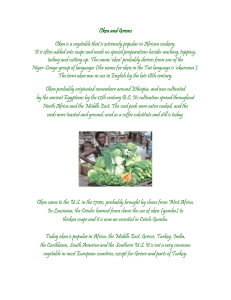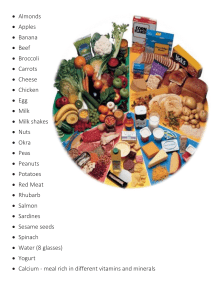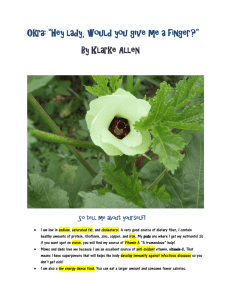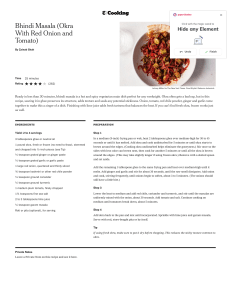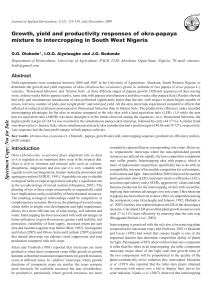Okra Extract as Antibacterial Agent & Pharmaceutical Binder
advertisement
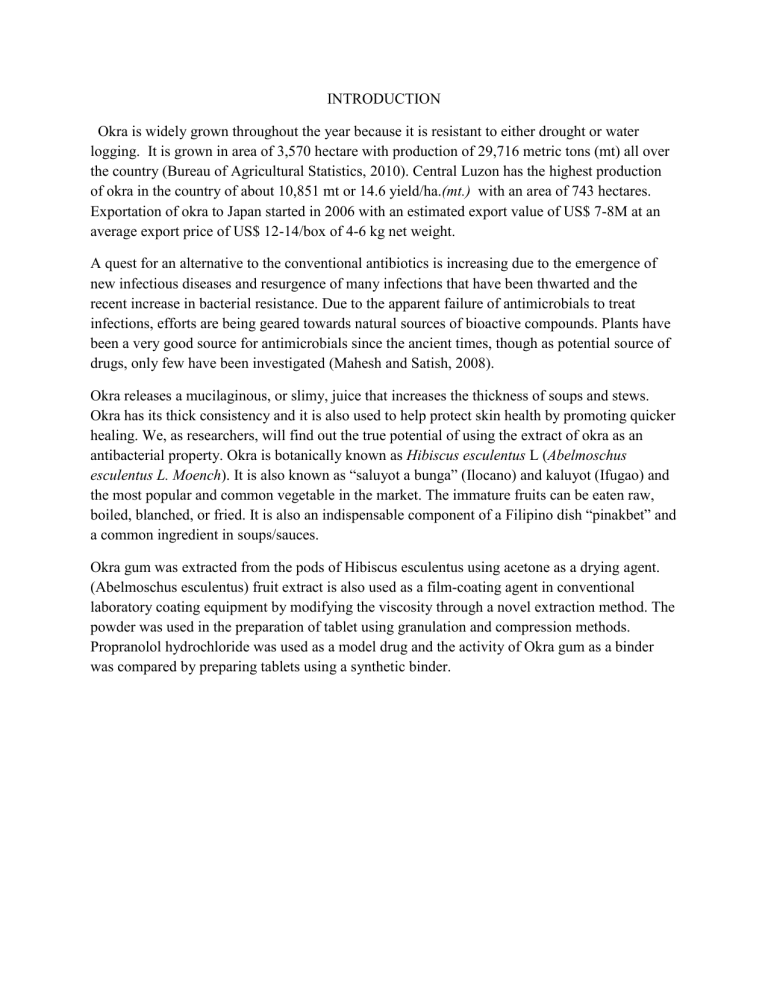
INTRODUCTION Okra is widely grown throughout the year because it is resistant to either drought or water logging. It is grown in area of 3,570 hectare with production of 29,716 metric tons (mt) all over the country (Bureau of Agricultural Statistics, 2010). Central Luzon has the highest production of okra in the country of about 10,851 mt or 14.6 yield/ha.(mt.) with an area of 743 hectares. Exportation of okra to Japan started in 2006 with an estimated export value of US$ 7-8M at an average export price of US$ 12-14/box of 4-6 kg net weight. A quest for an alternative to the conventional antibiotics is increasing due to the emergence of new infectious diseases and resurgence of many infections that have been thwarted and the recent increase in bacterial resistance. Due to the apparent failure of antimicrobials to treat infections, efforts are being geared towards natural sources of bioactive compounds. Plants have been a very good source for antimicrobials since the ancient times, though as potential source of drugs, only few have been investigated (Mahesh and Satish, 2008). Okra releases a mucilaginous, or slimy, juice that increases the thickness of soups and stews. Okra has its thick consistency and it is also used to help protect skin health by promoting quicker healing. We, as researchers, will find out the true potential of using the extract of okra as an antibacterial property. Okra is botanically known as Hibiscus esculentus L (Abelmoschus esculentus L. Moench). It is also known as “saluyot a bunga” (Ilocano) and kaluyot (Ifugao) and the most popular and common vegetable in the market. The immature fruits can be eaten raw, boiled, blanched, or fried. It is also an indispensable component of a Filipino dish “pinakbet” and a common ingredient in soups/sauces. Okra gum was extracted from the pods of Hibiscus esculentus using acetone as a drying agent. (Abelmoschus esculentus) fruit extract is also used as a film-coating agent in conventional laboratory coating equipment by modifying the viscosity through a novel extraction method. The powder was used in the preparation of tablet using granulation and compression methods. Propranolol hydrochloride was used as a model drug and the activity of Okra gum as a binder was compared by preparing tablets using a synthetic binder.
